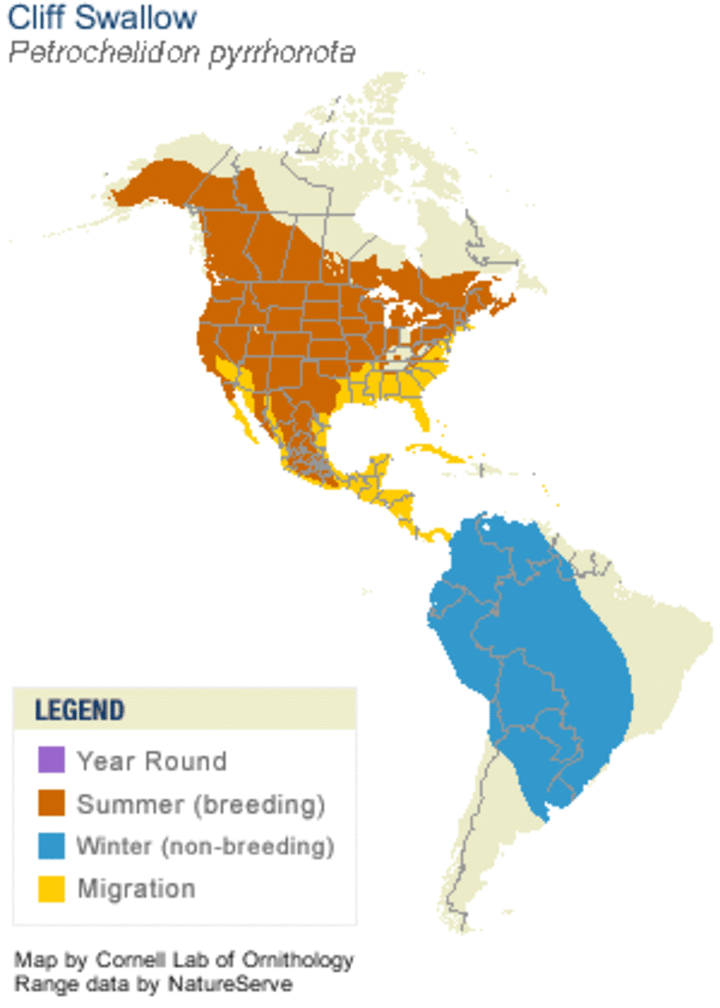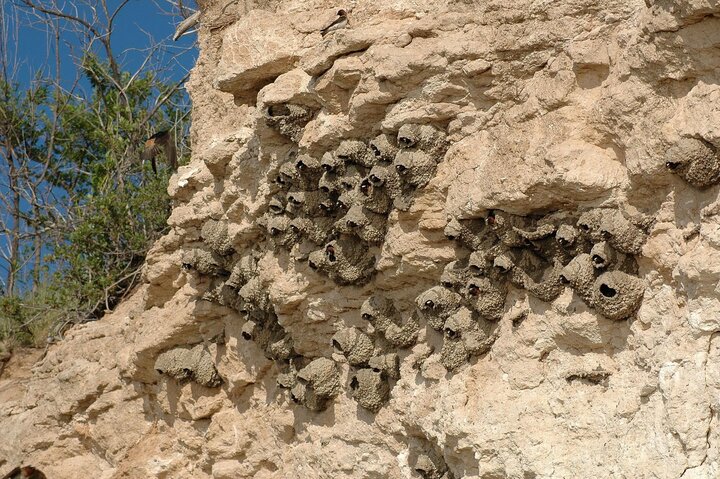Where are Cliff Swallows found?
Cliff Swallows spend the summer in North American and the winter in South America. They generally spend 3 months in North America, 3 months migrating south, 3 months in South America and 3 months migrating north.
Historically, nesting Cliff Swallows were birds of the American west, mostly west of the 100th meridian, building their mud nests underneath the horizontal rock ledges they found on the sides of steep canyons in mountainous areas or on buttes and escarpments. Approximately 125-175 years ago they began expanding their range across the Great Plains and into eastern North America. This expansion was coincident with people building roads with bridges and culverts, dams, and buildings. To Cliff Swallows these structures mimic rocky cliffs and offer the birds nesting sites with greater stability and protection—now days, Cliff Swallows very commonly nest on human-constructed structures.


Colonies are generally located near open fields, marshes, and pastures and close to a river, stream, lake or pond that provides a reliable mud source for use in nest building. Cliff Swallow colonies can be found from sea level to 3000 meters and from central Mexico to north of treeline in Alaska. In Nebraska, colonies range from 2-6000 nests in size, but the average size is 400-500 nests.
Cliff Swallows’ wintering range is poorly known, but it most likely extends from southern Brazil to southeastern Paraguay to northeastern-central Argentina to northwestern Uruguay. Most birds spend the winter in lowlands, marshes and agricultural areas along the Rio Paraná and Rio Uruguay to the north and northwest of Buenos Aires. They are likely nomadic during the winter, roosting in marsh vegetation and foraging over grasslands and marshes. Cliff Swallows do not nest while they are in South America.
How do Cliff Swallows migrate between North and South America?
During both spring and fall, Cliff Swallows migrate in groups of hundreds to thousands of birds. They travel only during the day (diurnal migrants), traveling overland following the Central American isthmus between North and South America. In the spring, they leave their wintering areas from February-April and begin arriving in North America in early March—they usually arrive in Nebraska around 16-18 April. In the fall, after their nestlings fledge, they leave their nesting areas and colonies are vacated—they usually leave Nebraska in late July-early September and arrive in their wintering areas by October.